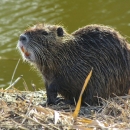This Rapid Response Plan for Elodea is intended to act as an administrative blueprint to how the US Fish and Wildlife Service (USFWS) will respond to newly discovered Elodea within Alaska. The goal of this document is to consolidate information and facilitate communication within the USFWS, as well as among partners. Some actions outlined in this document are specific to the USFWS and may not be relevant for other agencies or organizations. However, the specific tasks outlined within each step can be modified to reflect the mandates, authorities, and jurisdictions of other agencies or organizations. This plan will be updated as new techniques become available or the scope of the plan expand to include more partners. Thank you to partners for the input provided in developing these plans. Others are welcome to use of the plan as applicable.
Type of document
Plan
Protocol
Facility
Program
Species
Ecosystem
FWS and DOI Region(s)






